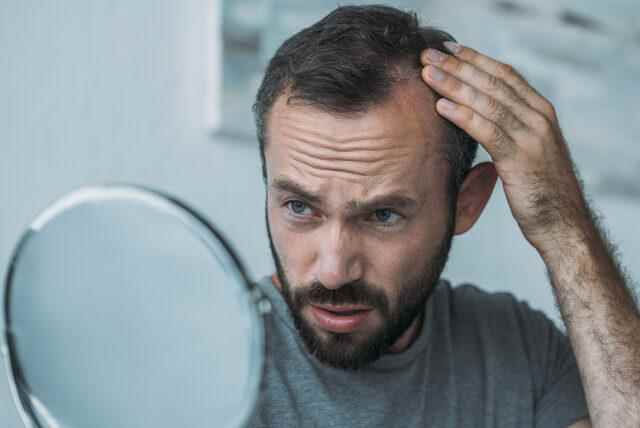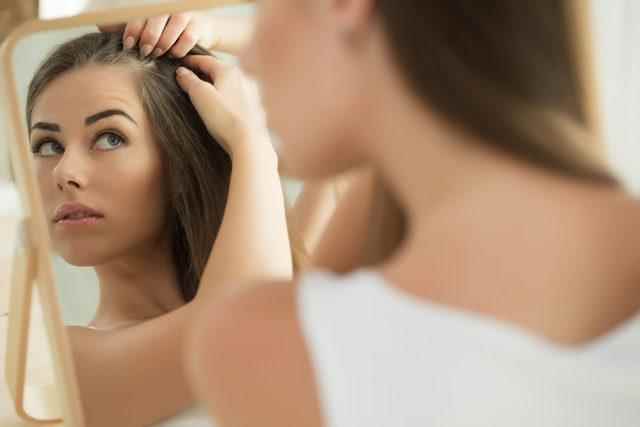Many factors, from rapid weight loss to thyroid disease, from hormonal changes to giving birth, from unbalanced nutrition to having a febrile infection, are responsible for our hair loss.
PANDEMIC STRESS TRIGGERED, STRESS HAIR LOSS!
Acıbadem Maslak Hospital Dermatology Specialist Prof. Dr. Emel Öztürk Durmaz, stating that the problem of hair loss is seen more frequently in the Covid-19 pandemic, said, “In addition to the extreme stress experienced during the pandemic period, factors such as cytokine release, drug use, high fever, cough and low oxygen saturation in patients with Covid-19 infection contribute to this increase. it was effective. So, according to the studies; “One out of every four patients with Covid-19 infection suffers from hair loss.” The more severe the infection, the more severe the hair loss.
Today, while drug treatments cannot provide sufficient effect in advanced hair loss, hair transplantation procedures are also difficult and do not increase the number of existing hair. PRP and laser methods, which have been frequently applied in recent years, can offer permanent solutions to chronic and serious hair loss; moreover, without the need to disconnect from everyday life. These methods increase blood circulation under the skin and support hair growth in bald areas and strengthen existing hair. Thus, it allows us to have bushy, healthy and voluminous hair again!

WHY DOES HAIR LOSS OCCUR?
- Experiencing metabolic or psychological stress
- hormonal changes
- have a febrile infection
- Side effects of drugs
- To give birth
- thyroid disease
- Anemia (especially iron deficiency)
- lose weight fast
- Unbalanced (poor in protein, vitamins and minerals) nutrition
- heavy metal poisoning
- Be operated
- Had an accident
4 EFFECTIVE METHODS FOR HAIR LOSS!
PRP / Platelet-rich plasma
The PRP method, which has promising results in male pattern hair loss (androgenetic alopecia), can also be effective in cicatricial alopecia (diseases that occur with continuous destruction in hair follicles and cause permanent hair loss) and chronic ringworm (alopecia areata). The method offers satisfactory results by increasing the density, thickness, resistance and quality of the hair.

PRP (Platelet / Rich – Plasma), which means platelet-rich plasma, is a plasma liquid containing high concentrations of platelets, prepared by centrifugation with special devices under sterile conditions from the person’s own blood. In this plasma fluid, there are 2-7 times more platelets than the platelet concentration in whole blood. In addition to platelets, PRP also contains more than 20 growth factors. The mechanism of action of the method is through the growth factors in the alpha granules of the platelets. When PRP is injected into the hair, many growth factors are released from the platelets. These factors increase blood supply in the scalp, trigger new collagen synthesis and reduce inflammation. Thanks to these effects, the density, thickness and quality of the hair increase.

How is it applied? A small amount of blood sample taken from the person is placed in a special tube. This tube is then placed in a centrifuge device, which ensures the separation of blood components under sterile conditions. With the separation process performed in the device, platelets and growth factors in the blood are separated from other blood components. Thus, the plasma rich in platelets and growth factors to be used in the hair is prepared. In the next step, this material is injected into the hair follicles needed. Side effects such as headache, spot bleeding, bruising, redness, itching, dandruff and edema that may develop after the procedure disappear in a short time.
How many sessions are needed? Generally, 3 sessions are applied once a month. After a break of 3-6 months, it is recommended to continue in 3 sessions or 3 sessions a year.
LASER AND LIGHT METHODS
Light and laser methods are particularly beneficial in androgenetic alopecia (male pattern hair thinning) and alopecia areata (ringworm), chemotherapy-induced hair loss and cicatricial alopecia (a group of diseases that result in permanent destruction of hair follicles and cause permanent hair loss). Dermatology Specialist Prof. Dr. Emel Öztürk Durmaz explains how these methods are applied:
low level laser
‘Low-level laser therapy’, also known as ‘cold laser’ and ‘soft laser’ among the people, is an effective light method in hair loss, which is carried out with devices that can penetrate the scalp and emit infrared radiation. In the studies carried out; It has been shown that the low-level laser method can increase the number, density, thickness and resistance of the hair, especially in men and women who have male pattern thinning problems. It also provides benefits in ringworm and chemotherapy-induced hair loss and cicatricial alopecia.
How is it applied?
The low-level laser method is applied with devices that emit light at a wavelength of 650-900 nm. The method works by increasing the blood supply to the scalp. Side effects such as hair loss and itching on the scalp also disappear in a short time.
How many sessions are needed? The low-level laser method is usually applied 2-3 times a week for 15-20 minutes (24 weeks-24 months).
fractional laser
Fractional lasers alone or in combination with other medical/surgical methods are effective in the problem of male pattern hair thinning and alopecia areata (ringworm). It is thought to be effective by triggering the transition of the hair to the growth phase by reducing inflammation in the hair follicles, increasing the blood flow in the skin, and increasing the absorption of externally applied drugs. There are no side effects other than pain, temporary redness, edema and itching.
How is it applied? No anesthesia is required before the application and sessions can be completed in 10-15 minutes.
How many sessions are needed? Although it varies from person to person, results can be obtained in a total of 10 sessions, once a week.
Excimer laser / Excimer Light
Excimer laser or excimer light (308 nm) is a method that is 60-77 percent effective in the problem of alopecia areata. It is thought to be effective by reducing inflammation in the skin and positively directing immunity. There are no side effects other than mild redness and spotting.
How is it applied? No anesthesia is required before the application and sessions can be completed in 10-15 minutes.
How many sessions are needed? It is usually applied twice a week for up to 24 sessions.
